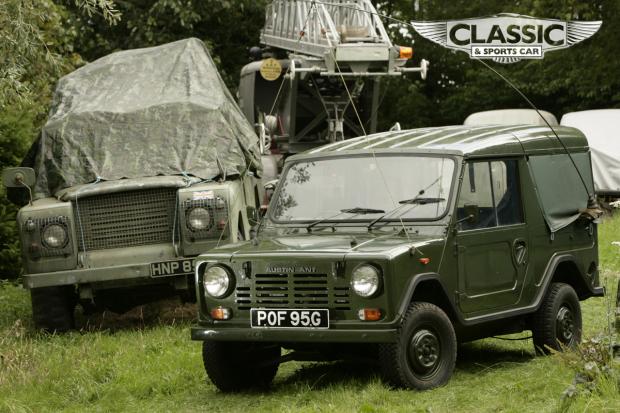With the exhaust and the suspension tucked away, ground clearance, aided by a nice flat underside, seems impressive, Junor’s comments notwithstanding. BL figures gave a minimum two-up plus a 600lb load as 7in at the rear wheels. Just in case, skidplates protect the entire transmission, the differential and the fuel tank.
There are a few potential failings on the practical side, all the same. Canted backwards and still with a side radiator, the engine has a reasonable amount of space around it but would nonetheless have to be removed for a clutch job, while accident repairs would inevitably be hampered by neither the front wings nor the front panel unbolting. Chances are, also, that the integral steering rack would have caused in-service problems.
On the road the first impression is that the Ant is pretty raucous, with lots of transmission and exhaust noise – the exhaust exits forward of the rear wheel, which doesn’t help. But you can’t help feeling that in this respect it is no worse than a 1968 Land-Rover. Steep inclines can slow the car, yet on the level it is zippy enough, the 58bhp 1275cc A-series not having to work hard to cope with the Austin’s modest 14.1cwt (716kg) kerb weight: about half that of an early Land-Rover.

Helping progress, too, is a surprisingly co-operative gearchange: once you’ve found first, it has a direct, dry, notchy action, allied to effective synchromesh and a sweet hydraulic clutch. The brakes, discs at the front, are completely unremarkable, slowing the Ant without any trauma, although apparently the rear drums can lock under provocation when the vehicle is unladen.
Sitting quite high and with the steering very direct, at 2.9 turns lock-to-lock, the Ant feels that it is very much on the point of oversteering, but this is probably something of an illusion, brought on by the seating position and the very fluid and thus slightly dumb steering responses. Where the Ant really scores over its leaf-sprung beam-axle rivals, however, is in the relatively soft and genuinely quite comfortable ride. Nor does the car roll to any real degree – Daniels was an old hand at devising torsion-bar suspension that had no need of anti-roll bars, and the result is an impressively well-controlled set-up. Off-road, and shifted into 4wd – the lack of a centre differential precluding all-drive on-roading – the Ant proves itself more than able, while retaining that refreshing level of comfort experienced on asphalt. “It’s very light, so it will climb over things easily, ” confirms Tallents.
So is the Ant a classic missed opportunity or another instance of a decadent BMC fiddling while Rome burned? Sure, there were design failings to be ironed out, but at least Issigonis and his tight-knit team were doing something concrete, in stark comparison with the countless ‘paper’ projects of the later BL years. And if BMC were to stay in the off-road sector, after the failure of the Champ, the Gipsy and the Moke, then a fresh and intelligent approach was needed. With the Ant, the corporation was on the threshold of creating a new class of vehicle – a small, affordable, comfortable off-roader. The idea wasn’t daft – as messrs Suzuki, Toyota et al were to demonstrate more than two decades later.
This article was originally published in the March 2007 issue of Classic & Sports Car magazine, which retains the copyright to all words and images. Click here to see the terms and conditions.
Words: Jon Pressnell; pictures: Tony Baker
Greg MacLeman
Greg MacLeman is a contributor to and former Features Editor of Classic & Sports Car, and drives a restored and uprated 1974 Triumph 2500TC












